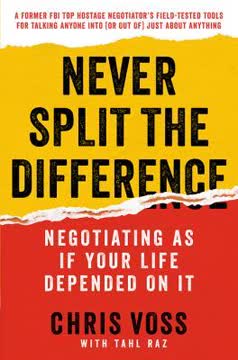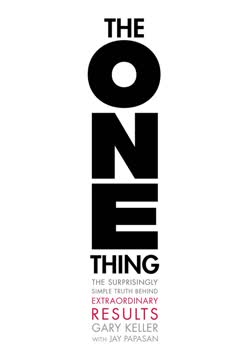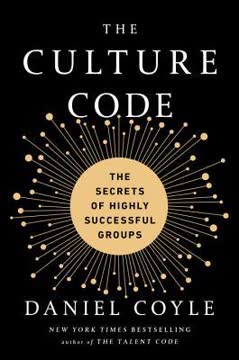Key Takeaways
1. Gamification leverages game mechanics to drive engagement and solve problems
"Gamification is the process of engaging audiences by leveraging the best of loyalty programs, game design, and behavioral economics."
Game mechanics drive engagement. Gamification uses elements like points, badges, levels, leaderboards, and rewards to create systems of mastery and progression. These mechanics tap into intrinsic and extrinsic motivations, making experiences more enjoyable and compelling. By applying game design principles to non-game contexts, organizations can:
- Increase user engagement and participation
- Motivate desired behaviors
- Solve complex problems through crowdsourcing
- Drive innovation and creativity
- Improve learning and skill development
Real-world applications are diverse. Companies like Nike, SAP, and IBM have successfully used gamification to enhance products, drive employee performance, and spur innovation. Even government agencies and non-profits leverage gamification for everything from public policy to scientific research.
2. Successful gamification strategies focus on feedback, friends, and fun
"When present and authentic to the user in experiences, the resulting attraction and retention are the strongest."
The three Fs drive engagement. Successful gamification strategies incorporate three key elements:
- Feedback: Providing users with clear, frequent information on their progress
- Friends: Enabling social connections and competition
- Fun: Creating enjoyable, amusing experiences
Design for positive emotions. Effective gamification taps into positive emotions like accomplishment, social connection, and enjoyment. This creates intrinsic motivation, where users engage because the activity itself is rewarding. Extrinsic rewards like points or prizes can supplement, but shouldn't be the primary driver.
Balance is key. Too much competition can be demotivating, while insufficient challenge leads to boredom. The best systems find the right balance of challenge, social interaction, and rewarding feedback to keep users engaged long-term.
3. Gamification can supercharge staff performance and foster innovation
"Companies like Apple, which has generated a record $400,000 in profit per employee, also spend up to $125,000 when a skilled employee leaves—often losing up to 65 percent of productivity for a full year during the transition."
Employee engagement is crucial. Gamification offers powerful tools to boost employee motivation, productivity, and retention:
- Performance tracking and feedback systems
- Skill development and mastery paths
- Peer recognition and social collaboration tools
- Innovation challenges and idea marketplaces
Real-world success stories abound. Companies like Nextjump have seen dramatic improvements in employee health and productivity through gamified wellness programs. SAP and IBM use gamification to drive innovation, with employees competing to develop new product ideas and solutions.
Address generational differences. Millennials, having grown up with video games, respond particularly well to gamified work environments. Providing frequent feedback, clear progression, and opportunities for meaningful achievement can help attract and retain top talent across generations.
4. Recruitment, training, and development benefit from gamified approaches
"America's Army became the most cost-effective recruitment project in the military's history."
Gamification revolutionizes talent acquisition. Organizations use gamified approaches to:
- Attract qualified candidates (e.g., Google's billboard puzzle)
- Assess skills through game-based challenges
- Provide realistic job previews (e.g., L'Oréal's Reveal game)
- Engage potential hires in company culture and values
Training becomes more effective and enjoyable. Gamified training programs offer:
- Increased engagement and completion rates
- Better knowledge retention through active learning
- Safe environments to practice skills and make mistakes
- Progress tracking and personalized learning paths
Development paths become clearer. Gamification can map out career progression, helping employees visualize their growth within the organization and motivating them to acquire new skills.
5. Employee health and wellness programs thrive with gamification elements
"Nextjump has seen improvements in its teams' performance during their working hours as well as an increase in the speed at which they work."
Health impacts productivity. Employee wellness directly affects company performance through:
- Reduced absenteeism and healthcare costs
- Increased energy and cognitive function
- Improved morale and job satisfaction
Gamification drives participation. Traditional wellness programs often struggle with low engagement. Gamified approaches see much higher participation rates by:
- Making health activities fun and social
- Providing clear goals and progress tracking
- Offering rewards and recognition for healthy behaviors
Success stories are compelling. Companies like Nextjump have achieved remarkable results:
- 80% of employees working out regularly (vs. 33% gym usage in general population)
- Improved team performance and productivity
- Lower healthcare costs and reduced turnover
6. Gamification cuts through consumer noise and sustains long-term engagement
"If you don't make a deliberate effort to engage them on a regular basis, odds are they will lose interest in your product or service."
Attention is scarce. In today's distraction-filled world, capturing and maintaining customer attention is challenging. Gamification helps by:
- Creating compelling, interactive experiences
- Tapping into intrinsic motivations
- Providing clear goals and feedback
- Enabling social sharing and competition
Engagement loops drive retention. Successful gamified experiences create virtuous cycles of:
- Motivating emotion
- Social call to action
- User re-engagement
- Visible progress and rewards
Long-term strategies are crucial. To sustain engagement:
- Define a core "grind" (repeatable action)
- Keep content fresh
- Use meaningful incentives
- Design for mastery and personal growth
- Create continuous learning opportunities
7. Crowdsourcing and gamification synergize to drive innovation and product development
"Foldit demonstrated that people are willing to work together for a common cause and use their shared human computational power to solve real problems."
Harness collective intelligence. Gamified crowdsourcing allows organizations to:
- Solve complex problems (e.g., Foldit protein folding)
- Generate innovative ideas (e.g., InnoCentive challenges)
- Develop new products (e.g., Kickstarter)
- Gather real-time data and content (e.g., CNN's iReport)
Game mechanics drive participation. Successful crowdsourcing platforms use:
- Clear goals and challenges
- Progress tracking and leaderboards
- Recognition and status rewards
- Collaboration tools and social elements
Benefits extend beyond solutions. Gamified crowdsourcing also:
- Builds brand engagement and loyalty
- Identifies talent and potential hires
- Creates a sense of ownership among participants
- Generates valuable market research and insights
Last updated:
FAQ
What's The Gamification Revolution about?
- Core Concept: The book explores how gamification—applying game mechanics in non-game contexts—can enhance engagement in business. It discusses how organizations can leverage game design principles to motivate employees and customers.
- Strategic Importance: It emphasizes that without employee and customer engagement, even the best strategies will fail. The authors argue that gamification is essential for modern businesses to thrive in a competitive landscape.
- Real-World Applications: The book provides numerous case studies from various industries, illustrating successful implementations of gamification strategies.
Why should I read The Gamification Revolution?
- Practical Insights: The book offers actionable insights for leaders in marketing, HR, and strategy on how to implement gamification effectively. It serves as a guide for organizations looking to innovate and engage their workforce.
- Expert Opinions: It includes perspectives from industry leaders and case studies that validate the effectiveness of gamification. This makes it a credible resource for understanding the impact of gamification on business success.
- Future-Proofing: As the workforce evolves, understanding gamification can help organizations adapt to new employee expectations, particularly from millennials who value engagement and feedback.
What are the key takeaways of The Gamification Revolution?
- Engagement is Key: The book stresses that engagement is the most valuable resource employees and customers can provide. Without it, businesses risk failure regardless of their strategies.
- Gamification Techniques: It outlines various gamification techniques, such as feedback loops, competition, and social interaction, that can enhance employee performance and customer loyalty.
- Cultural Shift: The authors highlight the need for a cultural shift within organizations to embrace gamification as a core strategy for innovation and engagement.
What are the best quotes from The Gamification Revolution and what do they mean?
- “Without employee and customer engagement, the best laid strategies and tactics are doomed to fail.” This quote underscores the critical importance of engagement in achieving business objectives.
- “The world will not return to the calm, focused ways of the past.” This reflects the reality of modern distractions and the necessity for businesses to adapt their strategies to maintain engagement.
- “Gamification presents the best tools humanity has ever invented to create and sustain engagement in people.” This emphasizes the transformative potential of gamification in driving engagement and innovation.
How does The Gamification Revolution define gamification?
- Definition: Gamification is defined as the process of engaging audiences by leveraging the best of loyalty programs, game design, and behavioral economics. It aims to drive user engagement in various contexts.
- Mechanics: The book discusses key game mechanics such as points, badges, levels, and leaderboards that can be used to motivate and engage users.
- Application: It highlights that gamification can be applied in almost any work environment, making it a versatile tool for enhancing employee and customer experiences.
What are some examples of successful gamification in business from The Gamification Revolution?
- FoxMeyer Drugs: The book discusses how FoxMeyer failed to engage employees during a software transition, leading to its bankruptcy. This serves as a cautionary tale about the importance of engagement.
- McDonald's Monopoly Game: This example illustrates how McDonald's used gamification to drive customer engagement and increase sales during promotional periods. The game created excitement and loyalty among customers.
- America's Army Game: The U.S. Army used this game to improve recruitment by providing a realistic experience of military life, which helped attract and prepare recruits effectively.
How can organizations implement gamification according to The Gamification Revolution?
- Identify Objectives: Organizations should start by clearly defining their goals for gamification, whether it's improving employee performance, enhancing customer loyalty, or driving innovation.
- Choose Appropriate Mechanics: The book suggests selecting game mechanics that align with the organization's culture and objectives, such as points systems, leaderboards, or challenges.
- Foster a Supportive Environment: Successful implementation requires a culture that supports experimentation and feedback, allowing employees to engage with the gamified systems meaningfully.
What are the three primary drivers of employee engagement discussed in The Gamification Revolution?
- Feedback: Providing regular and constructive feedback helps employees understand their performance and areas for improvement. This is crucial for maintaining motivation and engagement.
- Friends: Encouraging social connections among employees fosters collaboration and a sense of community, which can enhance overall job satisfaction and performance.
- Fun: Incorporating elements of fun into the workplace can make tasks more enjoyable and engaging, leading to higher productivity and morale.
How does The Gamification Revolution suggest measuring the success of gamification initiatives?
- Engagement Metrics: Organizations should track engagement metrics such as participation rates, user feedback, and overall satisfaction to assess the effectiveness of gamification strategies.
- Performance Outcomes: Measuring changes in performance indicators, such as sales figures or productivity levels, can help determine the impact of gamification on business objectives.
- Continuous Improvement: The book emphasizes the importance of iterating on gamification strategies based on data and feedback to ensure ongoing effectiveness and relevance.
What challenges might organizations face when implementing gamification according to The Gamification Revolution?
- Cultural Resistance: Employees may resist changes to traditional processes, especially if they perceive gamification as trivializing their work. Overcoming this resistance requires clear communication and buy-in from leadership.
- Design Complexity: Creating effective gamification systems can be complex, requiring careful consideration of game mechanics and user experience. Organizations must invest time and resources to design meaningful experiences.
- Sustainability: Maintaining engagement over time can be challenging, as initial excitement may wane. Organizations need to continuously innovate and refresh their gamification strategies to keep employees engaged.
How does The Gamification Revolution address the challenges of employee engagement?
- Understanding Employee Needs: The book emphasizes the importance of recognizing what motivates employees, such as recognition, purpose, and community. By addressing these needs, organizations can foster a more engaged workforce.
- Gamified Feedback Systems: It discusses the implementation of gamified feedback systems that provide instant recognition and rewards for employee performance. This approach can enhance motivation and job satisfaction.
- Creating a Culture of Engagement: The book advocates for building a culture where engagement is prioritized, and employees feel empowered to contribute. This can lead to improved retention and overall organizational performance.
What role does technology play in gamification according to The Gamification Revolution?
- Enabling Engagement: Technology facilitates the implementation of gamification strategies by providing platforms for tracking progress, awarding points, and fostering competition. It allows organizations to create interactive and engaging experiences.
- Data-Driven Insights: The book highlights how technology can be used to gather data on user behavior, helping organizations refine their gamification strategies. This data-driven approach ensures that gamified experiences remain relevant and effective.
- Accessibility and Reach: With the rise of mobile devices and social media, gamification can reach a broader audience. The book emphasizes the importance of being where users are and leveraging technology to enhance engagement.
Review Summary
The Gamification Revolution receives mixed reviews, with an average rating of 3.7/5. Readers appreciate its introduction to gamification principles and real-world examples but criticize its lack of structured implementation plans. Some find the book's gamified reading experience gimmicky, while others enjoy it. The book is praised for its insights into applying game mechanics to business, employee engagement, and customer interaction. However, some reviewers question the accuracy of certain statistics and find parts of the book difficult to comprehend or boring.
Similar Books










Download PDF
Download EPUB
.epub digital book format is ideal for reading ebooks on phones, tablets, and e-readers.





